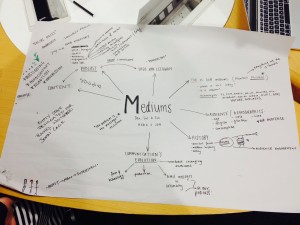On March 30th, we were shown 3 films, The Lonedale Operator by D.W. Griffith and Mack Sennett (1911), Suspense by Lois Webber & Phillips Smalley (1913) and Sunrise: A Song of Two Humans by F.W. Murnau (1927)
The Lonedale Operator is very much the classic ‘damsel in distress’ film. A young woman who is the administration operator at a train station is sent to an outpost and is threatened by 2 bandits who wish to burgle the building.
To stall the bandits, the young woman draws what looks like a gun to hold them back though, it is revealed at the end of the film, that the object isn’t a gun at all but rather a shiny metal wrench.
The reveal of the wrench is an extreme close up shot, this is to ensure that the audience is properly informed.
It is interspersed with the occasional coloured frames, some red and some blue. I can only surmise that these are used to elevate tension as most of them appear when the action is leading up to a point of conflict, threat or urgency.
Some directing choices seem almost comical, for example, the woman faints on the desk at thought of the bandits being near. I can only imagine that this might be an antiquated means to show her helplessness and vulnerability. Her fainting contributes very little to the narrative. There is also a scene where the eye-line of the woman is drastically off kilter, this is when she notices that the bandits are outside (below).

The Lonedale Operator by D.W. Griffith and Mack Sennett (1911)
It finishes with a show of kudos from the bandits as they take off their hats in solute to the woman’s cunning pretence. It is also made known that the love interest ‘gets the girl’ but in an awkward and flaccid embrace.
It is admirable that D.W. Griffith and Mack Sennett undertook such a project, however, there were several holes in the narrative and direction that could have been ironed out in preproduction and rehearsal. With such new and untested technology as film making was in 1911, the importance of the fundamentals of scriptwriting, direction and performance were set at a lower priority.
Suspense by Lois Webber & Phillips Smalley (1913) was the next film to be shown. It incorporated split screen shots where up to three characters would be placed in the same frame to represent that they were all communicating at the same moment but in different geographic areas. Webber’s technique was seldom used until it was revived in the 60’s (Bordwell Pg.462, 2012).

Suspense by Lois Webber & Phillips Smalley (1913)
Webber brought social matters like feminism, maternity and sexual exploitation to the screen. They addressed common decency when a man standing in the middle of the road is hit by the speeding car driven by the husband of the mother in distress. The fact that the husband leaps out of the car to help the victim is a sign of chivalry and a general statement that people should lookout for their fellow citizens. This scene also functions as a means to heighten the suspense by bringing danger closer; for example, as this event slows the husband down, the police in pursuit are gaining ground to arrest the husband for stealing a car to rescue his wife and child, unbeknownst to them. It also gives the knife wielding bandit more time to advance on the mother back at the house.
Justice is served when the police capture the bandit and pardon the husband for resisting arrest; this is communicated through overacting such as large physical gestures and a major-scale condo in the musical score to arrive at the closing credits.
The feature for the day was Sunrise: A Song of Two Humans by German film director F.W. Murnau (1927).
It is the story of a Man’s lustful machinations with a mistress who lures him away from his wife and child in the look to starting a new life in the city. He agrees to murder his wife and tell the authorities that she drown by accident. When moving to carry out the act, he is overcome with guilt and retracts from his wanton intentions. To be granted forgiveness, he treats his wife to an excursion to the city, however, on the boat trip back, they are faced with a violent storm that almost kills her dealing poetic justice to the Man for his neglect.
Sunrise is a highly stylised film drawing on German expressionism creating tension with the use of distorted frames and text. Double exposures are frequently used, one instance of this was when the Man dreams of lusting over his mistress, and like an apparition, she appears from behind and caresses him like a devious spirit.
Sunrise was made on the cusp of the ‘talkies’ and despite the film being free of audible dialogue, it incorporated sound effects that were relevant to the action on the screen, one example being the sounds of the city scenes.
On discussing this film with fellow students, many had exclaimed that, hypothetically speaking, should the film had had the addition of talking, it may have only benefited somewhat.
Janet Gaynor’s performance gained her the first ever Academy Award. Sunrise had definitely raised the bar for film standards internationally.

Janet Gaynor in Sunrise (1927)
Janet Gaynor in Sunrise (1927)







